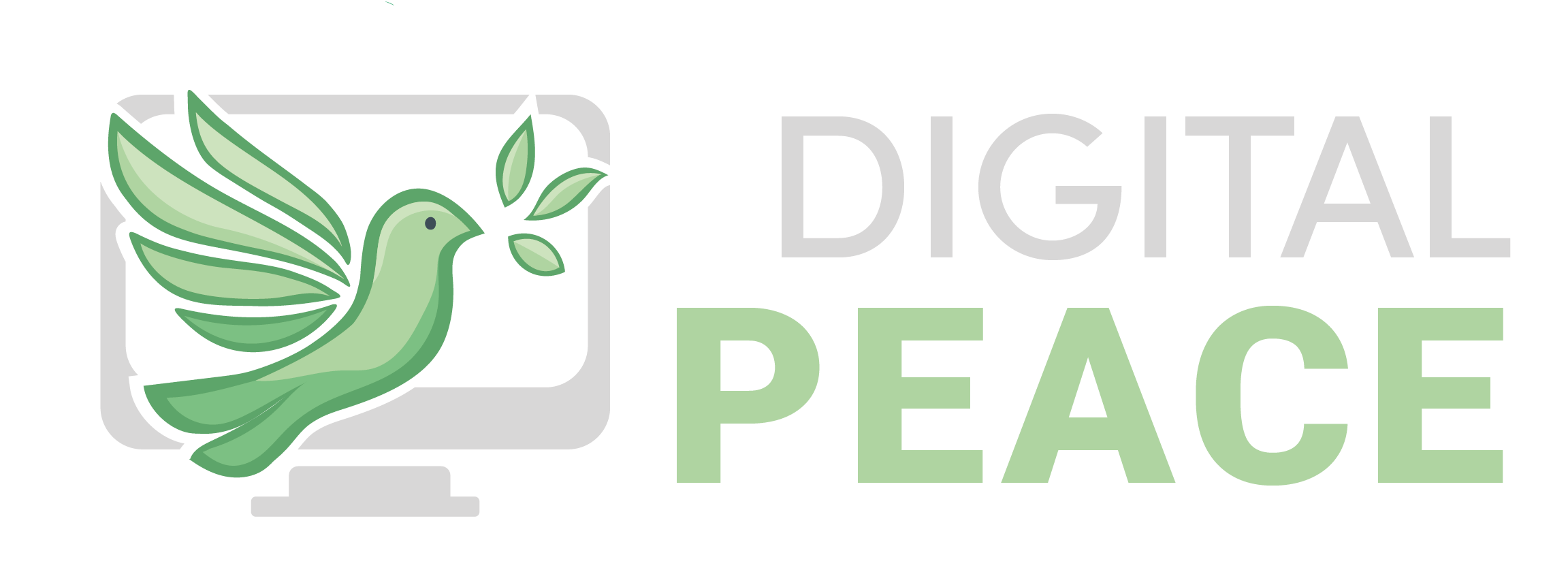Imagine trying to negotiate peace through a screen. No handshakes, no eye contact, no emotions shared in the same room. During the COVID-19 pandemic, this became reality for peacebuilders around the world. Overnight, negotiation and dialogue moved to the virtual sphere. However, a crucial element of any peace process can only be achieved rudimentarily by online means: To create trust, acceptance, and alignment through collective social interaction among the different parties involved in a conflict – the foundation of any traditional peacebuilding process. Consequently, digital and traditional ways of transforming conflicts have to be fusioned – creating hybrid peacebuilding as a core element for human development.
Information and communication technologies (ICT) change the way we talk with and listen to each other and the kind of stories we tell fundamentally. Applying them to peacebuilding can include marginalised or vulnerable groups into peace processes by keeping them informed and providing opportunities and resources for their participation.
Two sides of the same peacebuilding coin
Nevertheless, they also have the destructive potential to undermine participatory processes, re-enforce exclusion, disempower those affected by conflict, and produce results with little relevance. Hence, ICT can be used positively to promote peace and resolve conflicts, but also negatively to initiate, escalate and sustain conflicts.1 This duality makes ICT a powerful but fragile instrument within hybrid peacebuilding approaches.
One could argue that digital initiatives in general save time and money as they merely take place virtually and, thus, reduce the organisational and financial efforts for meetings and travelling to a minimum. For example, when conflict parties sign peace agreements at the end of complex negotiation settings, this is an expression for their desire to put an end to the conflict.
But this is not the end of the story, as the conflict causes have to be addressed afterwards during the implementation process, taking place in the real and not in the virtual world. During this period of increased social interaction, trust, acceptance, and alignment have to be promoted as the central pillars for keeping the peace agreement alive. That is why,
“As peacebuilding efforts are increasingly digitalised, we may wonder if and how such offline rituals become supplemented through digital peacebuilding practices”.2
As a result, apart from digital also traditional means are necessary to be part of the concept of hybrid peacebuilding.
The danger of fostering digital colonialism
Another aspect regarding the use of ICT during peace processes is that this may enhance them, but their application also holds the danger of fostering structures of digital colonialism. If the ownership of the digital infrastructure remains in the hands of a few, this keeps other social actors technologically dependent to get access to the digital sphere, especially when it comes to marginalised and vulnerable groups. 3
Hence, the idea to provide cheap and fast internet connectivity as well as the necessary hardware to participate in the digital world of communication seems at first glance promising to tackle these limitations. Yet without addressing ownership and access, such measures risk undermining inclusive hybrid peacebuilding practices. The majority of the people and communities living in many parts of the developing world that could probably benefit most from connectivity are currently least connected. It is sad to say, but if this trend continues, connectivity may never reach those whose lives it can transform the most 4
Even worse, if these factors are not considered accordingly, the imperative use of ICT in peace processes can even support the political, economic and social domination of one conflict actor over another. Hence, if the dominant powers are equivalent to the owners of the digital infrastructure, they might use their knowledge and control of the means of computation to keep other social groups in a situation of permanent dependency (Kwet, 2021).
Feminism and social justice as part of “hybrid peacebuilding”
Additionally, if ICT is to reach its full potential as a force for change, a feminist and social justice perspective is needed as well, because different forms of identities – including gender, race, and class – are all limiting factors with respect to access to the digital sphere in each particular context. 5
Hence, a positive impact of the digitalisation of peacebuilding in general can only be ensured if the analytic scope moves “(…) away from a technologically deterministic view of the role of ICTs for peacebuilding” towards “(…) the performative unfolding of the affordances of ICTs and their emergent properties in peacebuilding contexts”. 6 This perspective is key for embedding feminist and social justice values into hybrid peacebuilding frameworks.
As a consequence, incorporating ICT into peace processes has to follow the participative paradigm of communication for development. It gives the stakeholders in a peace process the opportunity to tell their own stories about themselves and for themselves, following Freire’s approach of participation in communication for social change and development as a process and not a product and leading to a process of community interaction with the external outcome to “make their voices heard” to the outside world. 7
ICT offers opportunities and poses challenges to peacebuilders
Thus, it is important to keep on using ICT during peace processes, both offering opportunities and posing challenges to peacebuilders and bearing the possibility to foster mutual listening and create stories that might have a positive impact on the outcome of peace processes.
This digital inclusion might enlarge the capability of development workers active in the peacebuilding sector to compile and share knowledge about the positions, interests and needs of those most affected by conflict and, thus, making their voices to be listened to. Additionally, ICT will likely go on changing the way how we develop options for the transformation of armed conflicts and make significant social change and development in conflictive environments possible.
We know that ICT used in peacebuilding co-evolve with the particular considerations, agendas and objectives to which they are put to use. As a result, there are avenues for adapting them to normative standards like for example the conflict-sensitive approach to communication for development. This might become the new momentum behind the use of ICT to prevent violent conflict and to make or build sustainable peace in the future.
Personal interaction cannot be replaced by digital means
However, although the seemingly endless outreach to millions of digital users might be a temptation for peacebuilders to let social networking websites as well as instant messaging and voice applications take the work off their hands to a certain extent, offline participation in peace processes still remains a viable option. It becomes more and more clear that the ‘human touch’ of personal interaction, trust building and face-to-face exchange in the context of meetings, workshops, trainings and visits to the field projects cannot be replaced by digital means.
It is important to keep on using those traditional, non-digital peacebuilding tools that already have been tried and tested successfully in the past – creating a truly hybrid peacebuilding. The digitalisation of peacebuilding can only contribute to development if also traditional means are considered to achieve the overarching goal to build peace, based on the theoretical concept of conflict-sensitive communication.
Thus, in order to achieve this holistic form of peacebuilding that comprises all different social, political and economic groups of a conflict, no matter their affinity to digitalisation or their connectedness to the digital world, the digital and traditional spheres of peacebuilding have to be both intertwined complementarily. Consequently, this new form of hybrid peacebuilding would effectively contribute to the establishment of conflict-sensitive communication as one of the central pillars of development. .
References
Thanks to Sigmund @ Unsplash for the header image!
- Nanoh Bello, Faruk & Simon Ayodele (2018), A Perspective on Conflict Sensitive Journalism and Conflict Management, in: Ozohu-Suleiman, Yakubu & Shamsuddeen Mohammed (eds.), Mass Communication Education and Practice in Nigeria, Zaria (Nigeria): Ahmadu Bello University Press, pp. 59-74
- Hirblinger, Andreas T. (2022), Building a peace we don’t know? The power of subjunctive technologies in digital peacebuilding, in: Peacebuilding (available online at https://doi.org/10.1080/21647259.2022.2154957
- Kwet, M. (2021): Digital colonialism: the evolution of American empire, ROAR (online magazine) https://roarmag.org/essays/digital-colonialism-the-evolution-of-american-empire/)
- Pepper, Robert & Jackman, Molly (2019): A Data-Driven Approach to Closing the Internet Inclusion Gap, in: Graham, M. (ed.): Digital Economies at Global Margins, Ottawa, ON/Boston, MA: IDRC/MIT Press, pp. 29-32.
- O’Donnell, A. & C. Sweetman (2018): Introduction: Gender, development and ICTs, in: Gender & Development, Vol. 26:2, pp. 217-229
- Welch, J. R., Halford, S. & Weal, M. (2015), Information and Communication Technologies (ICTs) and Peacebuilding: a Conceptual Framework, Proceedings of the ACM Web Science Conference, pp. 1-9
- McAnany, Emile G. (2012), Saving the World: A Brief History of Communication for Development and Social Change, Champaign, IL: University of Illinois Press






